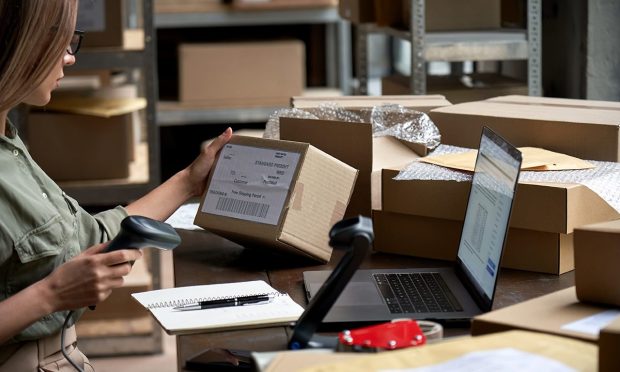Why $20T Of B2B Commerce Is Ripe For Disruption And A Big Digital Shift

As more enterprises shift their business online due to the coronavirus pandemic, the way transactions are done is undergoing a pronounced transformation. It’s a shift that has created a golden opportunity for headless commerce in areas traditionally more resistant to change.
That’s according to Fabric Inc. Chief Executive Officer Faisal Masud, who made it clear that he’s ready to grasp it with both hands in a wide-ranging interview with PYMNTS’ Karen Webster.
Masud should know an opportunity when he sees one. The veteran executive has been a key player in the evolution of eCommerce from its infancy in the 1990s until now, throughout a career that’s spanned Groupon, eBay and Amazon. He’s now focusing his energy on building the future of digital commerce at an ambitious and fast-growing startup that has plenty of money to spend following its $100 million Series B funding round earlier this month. And he already has an idea of what to do with all that cash.
“We want to continue growing, and as a result, we also want to be global,” he told Webster. And Masud’s globalization plan involves expanding into the largely neglected area of business-to-business (B2B) transactions, which he believes are ripe for transformation. “B2B is like, you wake up to find out that you’re back in the eighties in terms of movers,” he explained. “I mean, it’s pen and paper. I think it’s about the most draconian way of doing business.”
Given that the way things were done in the past has always worked so well, Masud noted that there was never any reason to change it. But that was all thrown out of the window when the pandemic came along. All of the older mechanisms and motions for inside sales and outside sales have been disrupted in a way that’s irreversible, as salespeople can no longer meet face-to-face.
Masud believes this has made B2B dealings more challenging, as there aren’t many reliable digital solutions for enterprises. “You’ve got to build self-service tools and online experiences, and they have to be bespoke,” he said. “You must have role-based access for your customers and different types of capabilities, but you’re not going to get any of that with Shopify. So that’s where we see a giant potential.”
How big is that potential, exactly? According to Masud, B2B commerce will likely be worth something like $20 trillion by 2027 — and all of that trade, he said, will have to move online.
That shift will likely cause some major headaches for traditional pen-pushers. Webster pointed out that digital payments are just a small part of B2B dealings. The process is heavily involved, with salespeople making calls, emails going back and forth, PDFs listing inventories and a discovery process with a lot of friction — all of which will need to be remedied.
Legacy platforms such as SAP aren’t up to the job because they’re closed environments where people have to be authenticated, Masud said. Worse, they do not support many of the use cases B2B commerce needs, and they don’t support customers either. On the other hand, he said modular commerce software like Fabric is well equipped to support the endless needs businesses have, he said.
“As you move to the self-serve world, you need the flexibility of serving different types of customers with different pricing, different experiences,” Masud said. “So that’s where I think there’s a huge market. It’s not just Fabric — so many more can enter and still benefit.”
In Fabric’s case, it has everything needed to hit the road running. Masud noted that it has all of the components, such as a storefront, an experience manager, a CMS, a page builder and a full suite of application programming interfaces (APIs) to power everything from customer identity to tax payments.
“So we will give you a full experience end-to-end, where you can run your entire commerce solution,” he said, explaining that customers aren’t confined to using a specific CMS, for example. They can choose any solution they want, such as a payment system, drop shipper service or anything else.
“Tell us who you want and we can integrate them,” he said. “This is absolute table stakes for a mid-market or enterprise customer. You can’t tell them what they want.”
